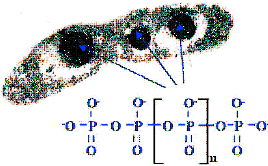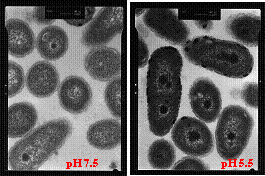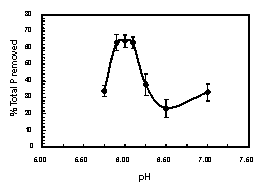Wastewater Forum Archive
WASTEWATER RESEARCH AND INDUSTRY SUPPORT FORUM
Meeting 10th March 2011
Please note that for older reports some links will be to sites that are no longer active.
This was the Forum’s 43rd meeting. It was held in the Boardroom of the Chartered Institution of Water & Environmental Management (CIWEM) in London. Members of CIWEM’s Wastewater Management Panel joined the Forum for the technical presentations and discussion.
Members of the Forum exchanged information about their research activities. A strength of the Forum is that members have a wide range of experience and an initiative or innovation that might seem valuable to some members might trigger concerns about undesirable unintended consequences from others.
FWR has been approached regarding revising the Urban Pollution Management (UPM) Manual. FWR holds the copyright, the first edition was 1994, the second edition was 1998. It is still being used; indeed WRc had recently run a training course on the UPM Manual for eighteen Environment Agency staff. The UPM was written to be as generic as possible to proof it against legislative change as far as possible. The Water Framework Directive has moved the goal posts. The balance of pro bono and paid contribution was uncertain and consequently so was the time scale and funding requirements. Members of the Forum did not have strong views about the necessity or urgency of revision.
Ofwat has been looking at pricing for water services as means of encouraging desired behaviours. South West Water’s experiment with rising block tariff had not worked because water was still so cheap that it was not worth economising. Similarly the rebates for disconnecting rainwater were too paltry to be incentives. For commercial premises, regulators’ treatment of green stormwater infrastructure (GSI) does not incentivise construction. When FWR’s householder’s guide is updated it will include GSI.
CEH has been researching the fate and behaviour of nano-silver in wastewater systems – it is used in clothing to prevent bacteria growth and hence odour development. Inflow and outflow has been monitored at 9 WwTW some with biological filters and some with activated sludge. Silver removal is very effective and 97% goes into the sludge. The concentration of nano-silver is small (5 ng/l) and 50% is removed. The project has not considered the toxicity of the silver, which almost certainly reacts to form Ag2S, which has little bioavailability.
CEH has put the National River Flow Archive (NRFA), which is the UK’s focal point for river flow on line
The Forum learnt that UKWIR’s research reports can still be read by visiting the British Library but they can no longer be borrowed via Interlibrary Loans supplies because they are too expensive. This removes valuable research that has been funded by the UK water industry even further from the public domain and even less accessible to researchers who are not members of UKWIR. The Forum hoped that the pricing policy might change following the retirement of the current Director in April 2011.
Defra is trying to plan evidence better by, for example embedding academics in policy units and appointing somebody to intelligence gathering. The Living With Environmental Change (LWEC) Directorate has been established. It is based in Norwich at the School of Environmental Sciences, University of East Anglia.
Acid-stimulated biological phosphorus removal (ASBPR)
Dr John McGrath, Queen's University Belfast, School of Biological Sciences, Medical Biology Centre.
John introduced the Questor Centre of which this work was part. He also described the discovery of phosphorus, its importance and non-substitutability for life, that in excess it results in eutrophication of water and the fact that the planet’s mineable reserves are being exhausted.
 Microbial cells will accumulate polyphosphate as a stress response; the reason why they do this is not known. Pathogens lose their virulence if their polyphosphate accumulation capability is removed. The black zones in the micrograph of the cell (right) are polyphosphate accumulations; n ranges from 3 to more than 1000. The phenomenon can be used to remove P from wastewater (enhanced biological phosphate removal, EBPR). EBPR has advantages over chemical precipitation, which is the alternative, because it is less expensive and proiduces less sludge, but typically the ratio of C:P in sewage is too low to feed EBPR and carbon such as acetic acid has to be purchased and added. John Upton pioneered EBPR in the UK at Severn Trent Water’s Stratford on Avon WwTW.
Microbial cells will accumulate polyphosphate as a stress response; the reason why they do this is not known. Pathogens lose their virulence if their polyphosphate accumulation capability is removed. The black zones in the micrograph of the cell (right) are polyphosphate accumulations; n ranges from 3 to more than 1000. The phenomenon can be used to remove P from wastewater (enhanced biological phosphate removal, EBPR). EBPR has advantages over chemical precipitation, which is the alternative, because it is less expensive and proiduces less sludge, but typically the ratio of C:P in sewage is too low to feed EBPR and carbon such as acetic acid has to be purchased and added. John Upton pioneered EBPR in the UK at Severn Trent Water’s Stratford on Avon WwTW.
The principle of EBPR is the cycling of the microbial biomass through anaerobic and aerobic stages. Under favourable conditions EBPR plants can remove 80 - 90 % of influent phosphate, whereas conventional activated sludge treatment removes only 20 - 40%.
 Burkholderia cepacia are naturally occuring waterborne Gram-negative bacteria first isolated in 1949 as the culprit of onion skin rot and first described as a human pathogen (which causes pneumonia in immuno-compromised individuals) in the 1950s. Strain AM19 accumulates polyphosphate as a stress response to acidity (micrographs right: pH 7.5 and 5.5).
Burkholderia cepacia are naturally occuring waterborne Gram-negative bacteria first isolated in 1949 as the culprit of onion skin rot and first described as a human pathogen (which causes pneumonia in immuno-compromised individuals) in the 1950s. Strain AM19 accumulates polyphosphate as a stress response to acidity (micrographs right: pH 7.5 and 5.5).
A 2000 litre pilot plant at New Holland WwTW, Belfast, which had 2 litre/min inflow, a 15 hour HRT and sludge age of 10-14 days worked well. Phosphate removal increased from 20% to 64% as pH was decreased from 6.5 to 6.0 and achieved achieve a total effluent P concentration of 2.9mgP/l. These are useful but not sufficient to comply with the Urban Wastewater Treatment Directive (which requires 80% removal across the system as a whole or 2.0 mgP/l for WwTW serving up to 100,000 p.e and 1 mgP/l for WwTW greater than 100,000 p.e. Controlling pH within this narrow range could be operationally challenging.
In contrast to EBPR, P accumulation occurs in a fully aerobic environment; uptake does not appear to depend on presence of VFAs. 35% of the bugs in activated sludge exhibit poly-P accumulation if under pH stress. These are strong advantages for ASBPR and indicative of its potential. Nitrification performance dips at pH 6.8 but then recovers as pH decreases further. It is conceivable that a granulated bacterial biomass with acid producers on the outside (nitrifiers) and poly-P accumulators on the inside (or layered biofilms) in he manner of ANAMMOX granular biomass could be effective.
Report of EC Workshop of the Technical Working Group for the development of End of Waste Criteria – Biodegradable Waste Subject To Biological Treatment Seville, 2nd March 2011
Dr Ioannis E. Alexiou – represented EWA. (Presentation)
The Joint Research Centre (JRC) or the European commission (EC) had produced a working document on End of Waste criteria for compost and for digestate as part of the evolving and soon to be amended EU Landfill Directive. The workshop to discuss this working document was discussed by representatives of only 12 Member States and 16 ‘stakeholders’. The opinion of the JRC and of DG ENV was that most MS are not meeting their biodegradable waste targets, therefore infraction proceedings are likely, possibly 2012-2015.
Quite quickly it was decided that there was insufficient information to consider EoW for digestate and that at this stage only compost could be considered. Sewage sludge was completely beyond the pale for the majority of delegates. Since these materials are going to be used on soil and soil chemistry and biology do not discriminate on these bases this seems bizarre. Neither does it seem consistent with a desire to facilitate complying with the Landfill Directive. However, this is an area in which there are strongly held dogmatic views.
As happened in 2000 to 2004, MS that had criteria for compost were happy for others to adopt their criteria but unwilling to compromise and move towards the criteria used by other MS.
The workshop considered the requirements needed for input materials that were needed to meet the EoW criteria in the output materials. DG ENV officers believed that the more separate input streams there were, the better controlled would be the quality of the output materials. This led on to various questions, which were to be addressed by April 2011, including potential labelling of input materials [but it is almost impossible to verify these a posteriori]. Further input from experts was required to address mixed wastes and biosolids. The workshop also considered the process conditions that would be required to meet EoW criteria, notably for pathogen reduction. The JRC asked for additional information from experts. A second [and final] workshop is expected to be held in October 2011. EoW for digestate might be considered when EoW for compost has been completed; maybe in 2012.
The next meeting of the Forum will be 30th June 2011.
 Microbial cells will accumulate polyphosphate as a stress response; the reason why they do this is not known. Pathogens lose their virulence if their polyphosphate accumulation capability is removed. The black zones in the micrograph of the cell (right) are polyphosphate accumulations; n ranges from 3 to more than 1000. The phenomenon can be used to remove P from wastewater (enhanced biological phosphate removal, EBPR). EBPR has advantages over chemical precipitation, which is the alternative, because it is less expensive and proiduces less sludge, but typically the ratio of C:P in sewage is too low to feed EBPR and carbon such as acetic acid has to be purchased and added. John Upton pioneered EBPR in the UK at Severn Trent Water’s Stratford on Avon WwTW.
Microbial cells will accumulate polyphosphate as a stress response; the reason why they do this is not known. Pathogens lose their virulence if their polyphosphate accumulation capability is removed. The black zones in the micrograph of the cell (right) are polyphosphate accumulations; n ranges from 3 to more than 1000. The phenomenon can be used to remove P from wastewater (enhanced biological phosphate removal, EBPR). EBPR has advantages over chemical precipitation, which is the alternative, because it is less expensive and proiduces less sludge, but typically the ratio of C:P in sewage is too low to feed EBPR and carbon such as acetic acid has to be purchased and added. John Upton pioneered EBPR in the UK at Severn Trent Water’s Stratford on Avon WwTW. Burkholderia cepacia are naturally occuring waterborne Gram-negative bacteria first isolated in 1949 as the culprit of onion skin rot and first described as a human pathogen (which causes pneumonia in immuno-compromised individuals) in the 1950s. Strain AM19 accumulates polyphosphate as a stress response to acidity (micrographs right: pH 7.5 and 5.5).
Burkholderia cepacia are naturally occuring waterborne Gram-negative bacteria first isolated in 1949 as the culprit of onion skin rot and first described as a human pathogen (which causes pneumonia in immuno-compromised individuals) in the 1950s. Strain AM19 accumulates polyphosphate as a stress response to acidity (micrographs right: pH 7.5 and 5.5).